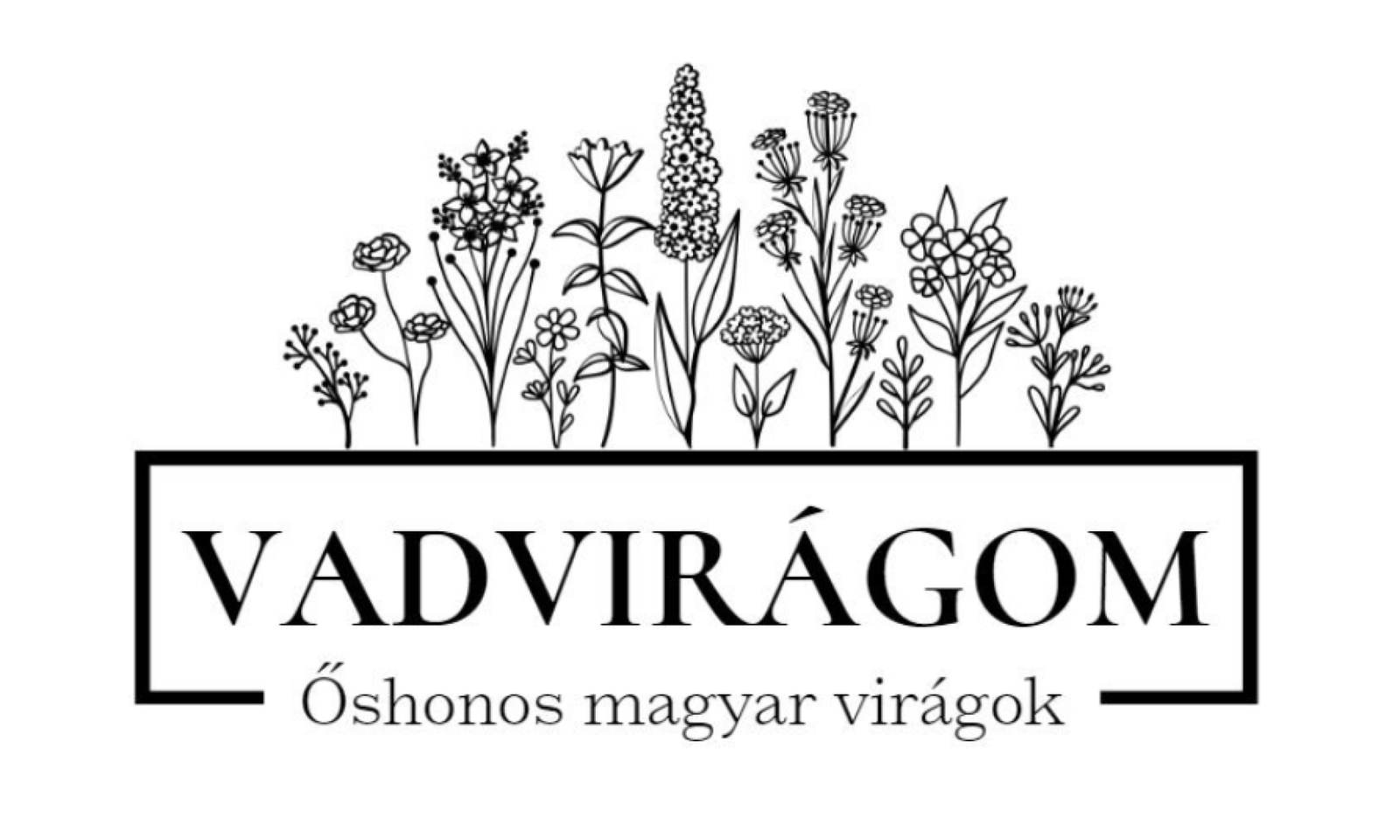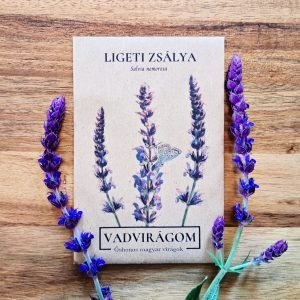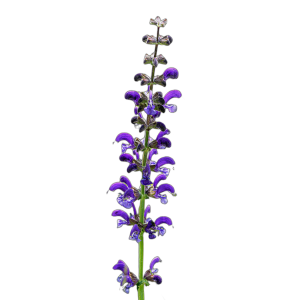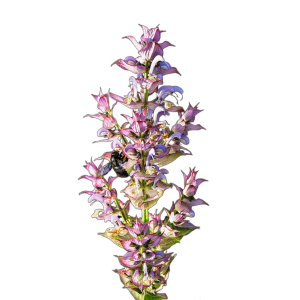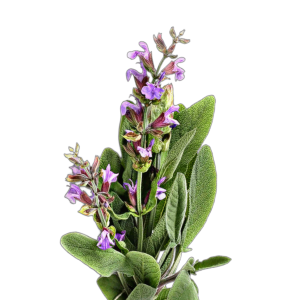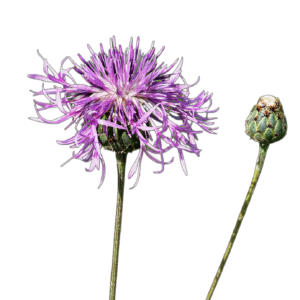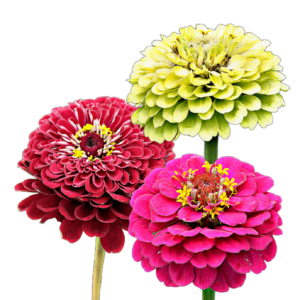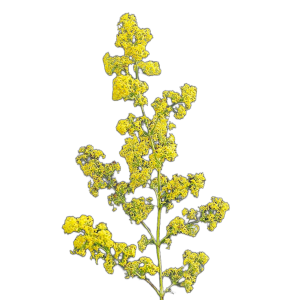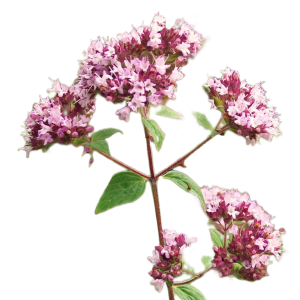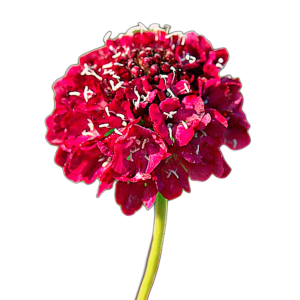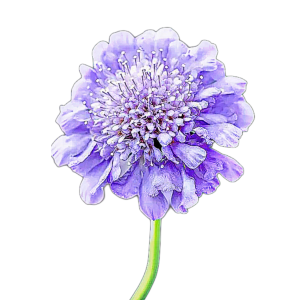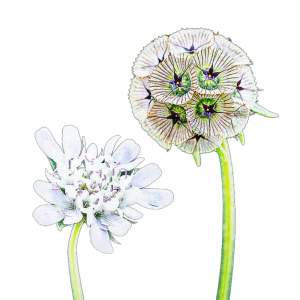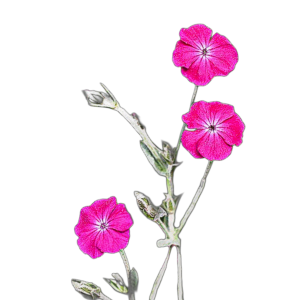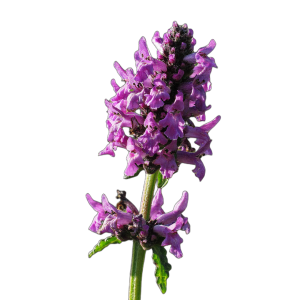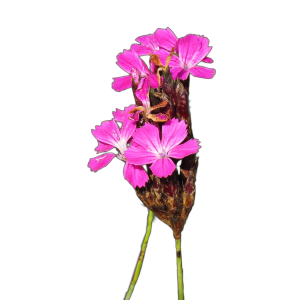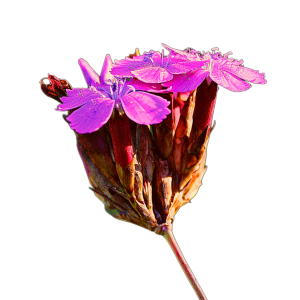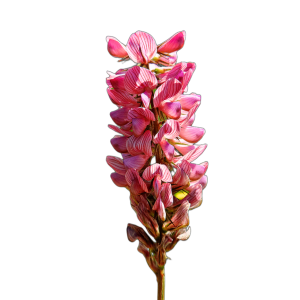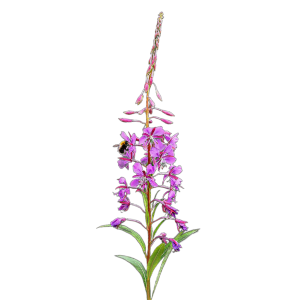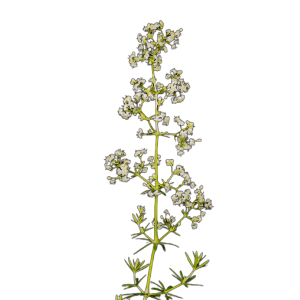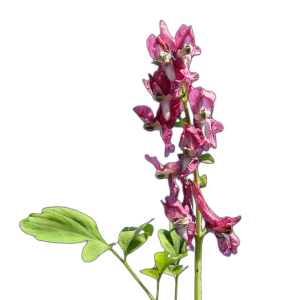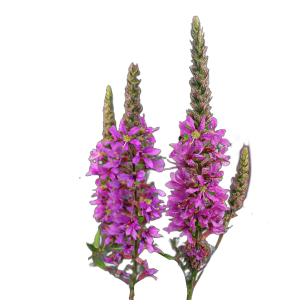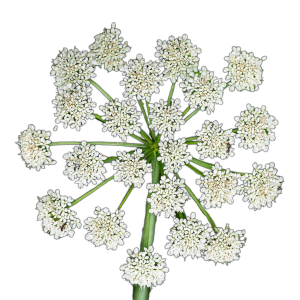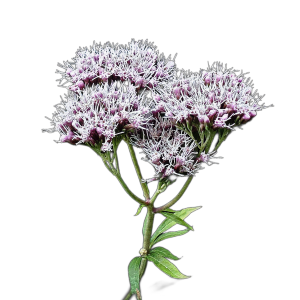-
-
Add to basket
- Add to wishlistAdd to wishlist
- 10/10 pollinator, perennial, butterfly favourite, bee-feeder, native
Ligeti sage (Salvia nemorosa) 1g, ~925 seeds
- 875 Ft
- Lime sage (Salvia nemorosa) is one of our most beautiful wild flowers, and its cultivars can be found in many garden shops. No garden should be without it, it is a great favourite with pollinators. The various buttercups are particularly fond of it (see photo), but it is also a great favourite of bumblebees. Lime sage is less well known for its medicinal properties, but like medicinal sage it can be used for its antiseptic properties, or as a herb (although it is also a...
Add to wishlistAdd to wishlist -
Add to basket
-
-
Add to basket
- Add to wishlistAdd to wishlist
- 10/10 pollinator, perennial, butterfly favourite, bee-feeder, native
Sage (Salvia pratensis) 1g, ~500 seeds
- 875 Ft
- The field sage (Salvia pratensis) is one of our most beautiful wild flowers, just like the sage of the Liga. The field sage is slightly larger in stature and has larger flowers than the sage, but has a similar purple colour. You may also see horticultural varieties from time to time. Sage is known for its interesting pollination mechanism, whereby the bee crawling in for nectar moves the lower stamen, which moves the upper stamen, which then spreads the nectar on the pollinator's back...
Add to wishlistAdd to wishlist -
Add to basket
-
-
Add to basket
- Add to wishlistAdd to wishlist
- 10/10 pollinator, perennial, biennial, butterfly favourite, bee-feeder, native
Musk sage (Salvia sclarea) 2g, ~500 seeds
- 875 Ft
- Musk sage (Salvia sclarea) is not native to our area, but it is a great choice for our gardens. Muscadine sclare is a beautiful large-flowered pink or purple sage originally from the Mediterranean, and unlike other sage species it is a biennial. Sometimes white varieties are also found in nurseries. It is a particular favourite of blue woodpeckers, as shown in the picture. The essential oils made from its flowers and leaves are often used in food, cosmetics, and...
Add to wishlistAdd to wishlist -
Add to basket
-
-
Add to basket
- Add to wishlistAdd to wishlist
- 10/10 pollinator, perennial, butterfly favourite, bee-feeder, native
Medical Sage (Salvia officinalis) 2g, ~240 seeds
- 875 Ft
- Medicinal sage (Salvia officinalis) is a medicinal and aromatic plant originally from the Mediterranean, long known and cultivated. It has been used for a very long time for many ailments ranging from sore throats to enteritis. It is also made into a tea, which is not recommended for breastfeeding or pregnant women. It can also be used as a spice, especially for duck, turkey and game meat, and is also found in Provance spice blends. Along with lavender, it has recently been the focus of research...
Add to wishlistAdd to wishlist -
Add to basket
-
-
Add to basket
- Add to wishlistAdd to wishlist
- 10/10 pollinator, perennial, butterfly favourite, bee-feeder, native
Red-leaved Sage (Salvia horminum "Pink Sundae") 0,5g, ~175 seeds
- 875 Ft
- The sage (Salvia horminum) is a special kind of sage originally from the Mediterranean. Unlike other sage species, it is an annual and does not produce flowers but colourful pink leaves, in the case of 'Pink Sundae'. A very easy to grow annual, it is the perfect space filler for open spring bulbs, but can also be used as cut flowers in bouquets. If you keep the flowers/stems cut, they can decorate your garden all summer long, or they can be used as a...
Add to wishlistAdd to wishlist -
Add to basket
-
-
Add to basket
- Add to wishlistAdd to wishlist
- 10/10 pollinator, perennial, butterfly favourite, bee-feeder, native
Iron-veined Imola (Centaurea scabiosa) 0,25g, ~40 seeds
- 875 Ft
- Centaurea scabiosa is a native Hungarian wildflower. According to a British study, the iron-veined imola is one of the TOP3 pollinator-attracting wildflowers: it is frequented by many pollinators, especially butterflies, and is a great nectar producer. Its very long flowering, lasting all summer and into late autumn, makes it particularly important for pollinators. The imola family includes the cornflower, meadow imola, mountain imola, Hungarian imola...
Add to wishlistAdd to wishlist -
Add to basket
-
-
Add to basket
- Add to wishlistAdd to wishlist
- 10/10 pollinator factor, annual, butterfly favourite
Umbelliferous verbena (Verbena bonariensis) 0,25g, ~1000 seeds
- 875 Ft
- The umbrella vervain (Verbena bonariensis) is enjoying a renaissance and has been introduced to the range because of the new Butterfly Lure 2.0 mix, as it is an irresistible nectar source for adult butterflies. Its long flowering period from mid-summer to autumn makes it the perfect choice. Historically, it was first grown as an ornamental in England in 1726 after James and William Sherard obtained its seeds from a dried specimen in Buenos Aires, and its popularity has continued ever since....
Add to wishlistAdd to wishlist -
Add to basket
-
-
Add to basket
- Add to wishlistAdd to wishlist
- 10/10 pollinator factor, annual, butterfly favourite
Butterfly Flower colour mix (Cosmos bipinnatus "Mix") 2g, ~300 seeds
- 875 Ft
- The butterfly blossom (Cosmos bipinnatus) was introduced because of the new Butterfly Lure 2.0 and Mama's Garden seed mix, as it is an irresistible nectar source for adult butterflies and flowers in the year of sowing, unlike many native species. It originated in Mexico, where local people planted it as an ornamental in gardens and the flowers were used on religious festivals. It was introduced to Europe in the 18th century, where it quickly became popular...
Add to wishlistAdd to wishlist -
Add to basket
-
- Out of StockRead more
- Add to wishlistAdd to wishlist
- 10/10 pollinator factor, annual, butterfly favourite
Gorgeous copper flower colour mix (Zinnia elegans "Dahlia") 2g, ~250 seeds
- 875 Ft
- The magnificent copperflower (Zinnia elegans) was added to the range because of the new Butterfly Lure 2.0 and Mama's Garden seed mix, as it is an irresistible nectar source for adult butterflies and sedges and flowers in the year of sowing, unlike many native species. Originally from Mexico, it has a long tradition in Hungarian gardens. It was introduced to Europe in the 18th century, where it quickly became popular in gardens for its easy care and...
Add to wishlistAdd to wishlist -
-
- Out of StockRead more
- Add to wishlistAdd to wishlist
- 10/10 pollinator, perennial, butterfly favourite, bee-feeder, native
Milk thistle (Galium verum) 1g, ~3200 seeds
- 875 Ft
- The milkweed (Galium verum) is a native Hungarian wildflower that attracts many pollinators and is also a food plant for many butterfly species (including many of our protected butterflies, the sedge). It was used to make cheese, hence its name ('gala' means milk in Greek). It can also be used as a yellow dye, and in the past it was used not only to rennet milk but also to colour cheese, for example Gloucester cheese has a strong yellowish-orange colour...
Add to wishlistAdd to wishlist -
-
- Out of StockRead more
- Add to wishlistAdd to wishlist
- 10/10 pollinating factor, perennial, herb, medicinal plant, butterfly favourite, bee-feeder, native
Oregano (Origanum vulgare) 1g, ~12000 seeds
- 875 Ft
- Oregano (Origanum vulgare) is a wild Hungarian variety of the spice known as pitch grass, which is most commonly known as pitch grass or wild marjoram. It has a less intense flavour than the Mediterranean variety used in Bolognese sauce, but it can be used as a spice and herb. It's also one of our most attractive wild flowers for pollinators, visited by a cavalcade of solitary bees, bumblebees and butterflies for nectar. Properties.
Add to wishlistAdd to wishlist -
-
- Out of StockRead more
- Add to wishlistAdd to wishlist
- 10/10 pollinator, annual, butterfly favourite, bee-feeder, native
Devil's eye (Scabiosa atropurpurea "Fire King") 0,3g, ~45 seeds
- 875 Ft
- The devil's-eye (Scabiosa atropurpurea) is a native European flower, closely related to the buttercup and pale devil's-eye (Scabiosa ochroleuca and Scabiosa columbaria), which are also native to Europe. It produces much larger flowers, up to 5 cm in diameter, and can grow up to 100 cm tall. The devil's eye 'Fire King' is an annual species, but overwinters as a seedling. Its stems can be supported on bushy, windy...
Add to wishlistAdd to wishlist -
-
-
Add to basket
- Add to wishlistAdd to wishlist
- 10/10 pollinator, annual, butterfly favourite, bee-feeder, native
Scabiosa atropurpurea "Snowmaiden" 0,3g, ~45 seeds
- 875 Ft
- The devil's-eye (Scabiosa atropurpurea) is a native European flower, closely related to the buttercup and pale devil's-eye (Scabiosa ochroleuca and Scabiosa columbaria), which are also native to Europe. It produces much larger flowers, up to 5 cm in diameter, and can grow up to 100 cm tall. The Snowmaiden devil's-eye is an annual species, but overwinters as a seedling. Its stems can be supported on a bush, in a windy spot...
Add to wishlistAdd to wishlist -
Add to basket
-
-
Add to basket
- Add to wishlistAdd to wishlist
- 10/10 pollinator, annual, butterfly favourite, bee-feeder, native
Scabiosa atropurpurea "Oxford Blue" 0,3g, ~45 seeds
- 875 Ft
- The devil's-eye (Scabiosa atropurpurea) is a native European flower, closely related to the buttercup and pale devil's-eye (Scabiosa ochroleuca and Scabiosa columbaria), which are also native to Europe. It produces much larger flowers, up to 5 cm in diameter, and can grow up to 100 cm tall. The Oxford Blue devil's eye is an annual species, but will overwinter as a seedling. Its stems can be supported on bare stems, in windy...
Add to wishlistAdd to wishlist -
Add to basket
-
-
Add to basket
- Add to wishlistAdd to wishlist
- 10/10 pollinator, annual, butterfly favourite, bee-feeder, native
Devil's eye (Scabiosa atropurpurea "Black Knight") 0,3g, ~45 seeds
- 875 Ft
- The devil's-eye (Scabiosa atropurpurea) is a native European flower, closely related to the buttercup and pale devil's-eye (Scabiosa ochroleuca and Scabiosa columbaria), which are also native to Europe. It produces much larger flowers, up to 5 cm in diameter, and can grow up to 100 cm tall. Devil's Eye Black Knight is an annual species, but overwinters as a seedling. Its stems can be supported on bare stems, in windy...
Add to wishlistAdd to wishlist -
Add to basket
-
-
Add to basket
- Add to wishlistAdd to wishlist
- 10/10 pollinator, annual, butterfly favourite, bee-feeder, native
Starry devil's eye (Scabiosa stellata) 0,5g, ~20 seeds
- 875 Ft
- The starry devil's-eye (Scabiosa stellata) is a native European wildflower, whose dried seed pods can make beautiful elements in bouquets. This is the speciality of this species, but it is also very useful in the garden when in flower, attracting, like other species of devil's eye, a large number of pollinators, bees and butterflies. You can also cut off the open flower heads to prolong flowering, but be sure to leave them to ripen to seed, as they have a beautiful seed coat....
Add to wishlistAdd to wishlist -
Add to basket
-
-
Add to basket
- Add to wishlistAdd to wishlist
- perennial, butterfly, bee-feeder, native
Velvet thyme (Lychnis coronaria) 0,1g, ~190 seeds
- 875 Ft
- The velvet cuckoo-grass (Lychnis coronaria) is a native Hungarian wildflower that is protected. Fortunately, this native flower is now widely planted in the garden, with its beautiful dark pink flowers and silvery leaves. Its wintergreen (or wintersilver? :) ) leaves do not retract in winter. It is a short-lived perennial, but it sows its seeds well and spreads well. An excellent choice for rock gardens and mixed flower beds. It is easy to...
Add to wishlistAdd to wishlist -
Add to basket
-
- Out of StockRead more
- Add to wishlistAdd to wishlist
- edible flower, perennial, butterfly, bee-feeder, native
Ryegrass (Lychnis flos-cuculi) 0,25g, ~1500 seeds
- 875 Ft
- The meadow cuckoo flower (Lychnis flos-cuculi) is a very graceful and unique-looking, beautiful wild flower. Its nectar makes it very popular with pollinators, especially butterflies. Its beautiful flowers are edible and can be a beautiful decoration on the plate. Latin name: Lychnis flos-cuculi Family: Caryophyllaceae Life cycle: perennial Flowering time: May - July Size: 30-50 cm Soil: average, moist Growing area: sunny, shady Seeds origin:...
Add to wishlistAdd to wishlist -
-
-
Add to basket
- Add to wishlistAdd to wishlist
- 10/10 pollinator factor, perennial, butterfly favourite, beekeeper, nitrogen bomb, native grassland, native
Hornwort (Lotus corniculatus) 10g, ~8300 seeds
- 875 Ft
- seeds origin: Austria 1 package contains 10 g, about 8300 seeds. For sowing suggestions and more details, scroll down.
Add to wishlistAdd to wishlist -
Add to basket
-
-
Add to basket
- Add to wishlistAdd to wishlist
- perennial, herb, butterfly, bee-feeder, native
Medical pure grass (Stachys officinalis/Betonica officinalis) 0,1g, ~65 seeds
- 875 Ft
- A beautiful native wildflower is the medical buttercup (Stachys officinalis/Betonica officinalis), which is worth keeping in your garden for its beauty alone. Its nectar makes it a very attractive flower for bumblebees and butterflies, along with other species of the orphan family. As its name suggests, it has also been widely used as a medicinal plant: as a tea for coughs, it has also been found to be effective against rheumatism and epilepsy. Properties.
Add to wishlistAdd to wishlist -
Add to basket
-
-
Add to basket
- Add to wishlistAdd to wishlist
- perennial, butterfly, bee-feeder, native
Bareroot (Dianthus carthusianorum) 0,1g, ~80 seeds
- 875 Ft
- Barnyard grass (Dianthus carthusianorum) is a beautiful native wildflower that has a great place in our gardens. Butterflies, like other carnations such as meadow cuckoo-grass, are particularly keen for its nectar. It gets its Latin name from the Carthusian monks who were fond of planting it in the gardens of their monasteries. This is probably the origin of the Hungarian name for barnyardgrass. The Hungarian carnation (Dianthus pontederae) and the field carnation are very similar species...
Add to wishlistAdd to wishlist -
Add to basket
-
-
Add to basket
- Add to wishlistAdd to wishlist
- perennial, butterfly, bee-feeder, native
Hungarian Carnation (Dianthus pontederae) 0,1g, ~200 seeds
- 875 Ft
- The Hungarian carnation (Dianthus pontederae) is a true Carpathian Basin endemic, native species, as its name suggests. It is found only here in the world, but interestingly it is very little known, even though it is a beautiful ornamental plant. Its flowers are a little similar to those of barnyard grass. Butterflies, like other carnations such as meadow cuckoo-grass, are particularly keen for its nectar. The Hungarian carnation prefers dry places, is relatively undemanding, and...
Add to wishlistAdd to wishlist -
Add to basket
-
-
Add to basket
- Add to wishlistAdd to wishlist
- 10/10 pollinator factor, perennial, butterfly favourite, bee-feeder, nitrogen bomb
Baltacim (Onobrychis viciifolia) 15g, ~750 mag
- 875 Ft
- The buttercup (Onobrychis viciifolia) is a fantastically versatile and useful plant that should be in our gardens for many reasons. It's a good fodder plant, mainly known for this, but it also produces lots of nectar and is a magnet for bees and butterflies. It is a food plant for many butterfly species, along with its cousin, the sand moth. It can also be a useful part of the garden because of its nitrogen-fixing...
Add to wishlistAdd to wishlist -
Add to basket
-
- Out of StockRead more
- Add to wishlistAdd to wishlist
- perennial, herb, butterfly favourite, beekeeper
Earth deréce (Epilobium angustifolium) 0,05g, ~1100 seeds
- 875 Ft
- The woodland buttercup (Epilobium angustifolium) is a beautiful native wildflower, somewhat similar to the meadow willow (Lythrum salicaria). Its large pink flowers are real pollinator magnets and it is also a food plant for many butterflies, including many species of hemp (gall hemp, grape hemp, striped hemp, dwarf hemp, striped hemp, bat hemp, red hemp). It is called fireweed because it is a pioneer plant that often takes over an area after a fire. Lord of the Rings...
Add to wishlistAdd to wishlist -
-
-
Add to basket
- Add to wishlistAdd to wishlist
- perennial, butterfly favourite, native
White meconium (Melandrium album) 1g, ~800 seeds
- 875 Ft
- The white meconium (Melandrium album/Silene latifolia) is a very elegant native perennial carnation. Like soapwort, it contains saponin in its roots, which is why it was used for washing in the past. It only starts to smell at night because it is pollinated by moths and sedges. More attention should be paid to nocturnal pollinators and their food sources, as they play as important a role in pollination and the ecosystem as their daytime counterparts. The white bee flower is a beautiful,...
Add to wishlistAdd to wishlist -
Add to basket
-
-
Add to basket
- Add to wishlistAdd to wishlist
- perennial, butterfly, bee-feeder, native
Bladderwort (Silene vulgaris) 1g, ~1600 seeds
- 875 Ft
- Bladderwort (Silene vulgaris) is a very elegant native perennial carnation. Like soapwort, it contains saponin in its roots, which is why it was used for washing in the past. It only starts to smell at night because it is pollinated by moths. The young shoots and leaves are edible and are still collected in many places at home to make salads or stews. It is also widely consumed abroad: in Spain it is added to gazpacho, in Italy to risotto, in Crete...
Add to wishlistAdd to wishlist -
Add to basket
-
-
Add to basket
- Add to wishlistAdd to wishlist
- edible, perennial, herb, butterfly, bee-feeder, native
Common Galium (Galium mollugo) 1g, ~2100 seeds
- 875 Ft
- The common galweed (Galium mollugo) is a fantastically fragrant native wildflower, often consumed as a tea for its positive effects on the thyroid gland. Along with other species (such as milkweed), it is an important food plant for many of our butterflies, including 8 species of sedge, including the duck-tailed sedge. Properties: Latin name: Galium mollugo family: Rubiaceae life: perennial flowering time:May-August size: 20-30 cm soil: average growing area: sunny, semi-shade other:...
Add to wishlistAdd to wishlist -
Add to basket
-
-
Add to basket
- Add to wishlistAdd to wishlist
- perennial, butterfly, bee-feeder, native
Lysimachia vulgaris 0,1g, ~390 seeds
- 875 Ft
- The common lyssum (Lysimachia vulgaris) is an unfairly unknown Hungarian wildflower. Like the meadow willow (Lythrum salicaria), it prefers wetter habitats, and in English it is called purple loosestrife and yellow loosestrife. Their name is derived from the translation of the Greek name Lysimachus, which ancient records say was named after a general of Alexander the Great. It is a popular ornamental plant in America, where it is considered exotic and is often planted. Here, however,...
Add to wishlistAdd to wishlist -
Add to basket
-
-
Add to basket
- Add to wishlistAdd to wishlist
- perennial, herb, butterfly, bee-feeder, native
Corydalis cava/bulbosa 0,5g, ~80 seeds
- 875 Ft
- The Corydalis cava is a small Hungarian wildflower native to Hungary, which can cover the forest undergrowth in early spring when it blooms. It is a very important wildflower for pollinators: both because of its early flowering, when not many nectar sources are available, and because one of our butterfly species, the Apollo butterfly, is exclusively fed on Celtic butterflies (besides the pseudocathedral Celtic butterfly, we also find its cousin, the fingered Celtic butterfly). It likes...
Add to wishlistAdd to wishlist -
Add to basket
-
-
Add to basket
- Add to wishlistAdd to wishlist
- perennial, butterfly, bee-feeder, native
Ryegrass (Lythrum salicaria) 0,1g, ~2400 seeds
- 875 Ft
- Meadow willow (Lythrum salicaria) is one of our most attractive native Hungarian wildflowers, somewhat similar to the woodland willow (Epilobium angustifolium), but much better known. It prefers wetter habitats, and is often found in marshy areas, bordering water banks. Its long, pink flowers are a great favourite with pollinators. The meadow willow is relatively tall at 100-180 cm, while its smaller relative, the willow willow (Lythrum virgatum) is much shorter, only...
Add to wishlistAdd to wishlist -
Add to basket
-
-
Add to basket
- Add to wishlistAdd to wishlist
- annual, butterfly favourite, beekeeper, nitrogen bomb, native, green manure
Common vetch (Vicia villosa) 5g, ~160 seeds
- 875 Ft
- Our useful, nitrogen-fixing native plant is the hairy vetch (Vicia villosa). It is officially annual but often overwinters. Its abundant flowers provide pollinators with lots of nectar, and butterflies love it. It forms a large green mass and can overwhelm surrounding plants, so choose its location carefully. Characteristics: other names: vetch Latin name: Vicia villosa family: Fabaceae life span: annual (overwintering) flowering time: june-august size: 20-80 cm...
Add to wishlistAdd to wishlist -
Add to basket
-
-
Add to basket
- Add to wishlistAdd to wishlist
- balcony box, annual, herb, herbaceous plant, butterfly favourite, bee-keeper
Anise (Pimpinella anisum) 2g, ~680 seeds
- 875 Ft
- Aniseed (Pimpinella anisum) has been a known herb in Hungary for 2000 years, introduced by Roman soldiers from the Mediterranean. Anise seeds are obtained by harvesting the seeds, it is worth saving them and using them to flavour dishes. In addition to its spice and medicinal properties, it is an important food plant for the caterpillar of the swallowtail butterfly, which is a favourite munching food of the celery family (Apiaceae). Properties: other names: anise seed, fragrant anise, common anise, fennel, fennel, anise pimpinella Latin name: Pimpinella...
Add to wishlistAdd to wishlist -
Add to basket
-
- Out of StockRead more
- Add to wishlistAdd to wishlist
- perennial, butterfly, bee-feeder, native
Sweet hemp (Eupatorium cannabinum) 0,25g, ~1100 seeds
- 875 Ft
- The sedge hemp (Eupatorium cannabinum) is a native Hungarian wildflower that likes wetter places, so it is often found along waterways and ditch banks. Its whitish-pink spikes are irresistibly attractive to butterflies, perhaps attracting more butterflies than the summer lilac. It has been much used as a medicinal herb, but there are now warnings about its pyrrolizidine alkaloid content, which is similar to that of black coneflower and may be harmful to the liver. Its seeds are prone to spreading. Properties: other names:...
Add to wishlistAdd to wishlist -
-
- Add to basket
- perennial, butterfly favourite, native
White meconium (Melandrium album) 1g, ~800 seeds
- 875 Ft
- The white meconium (Melandrium album/Silene latifolia) is a very elegant native perennial carnation. Like soapwort, it contains saponin in its roots, which is why it was used for washing in the past. It only starts to smell at night because it is pollinated by moths and sedges. More attention should be paid to nocturnal pollinators and their food sources, as they play as important a role in pollination and the ecosystem as their daytime counterparts. The white bee flower is a beautiful,...
